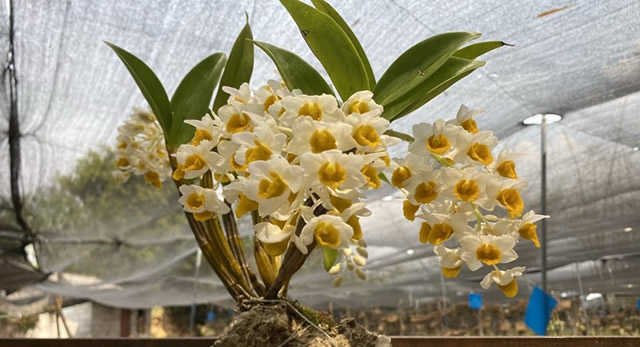How to trim red beans and suctions on red bean and cinema for breeding methods and precautions
1. The breeding method and precautions of the yew
1. Soil
Equipment breeding should be loose, rich in humus, water preservation, Fertilizer, and breathable soil.You can choose a mixed matrix with grasses, perlite, etc. with loam soil.Due to the obtnerality of the clay, the sand preservation and the poor water preservation are not suitable for use.In addition, yew cultivation should be fertilized in time. It is better to apply Organic fertilizer and 0.02 catties of Compound fertilizer per plant at a time. It can also add farmhouse Fertilizer and cake Fertilizer (such as cottonseed cakes, Peanut cakes, hemp cakes).
2. Fertilization
Fertilization should be sprinkled along the wall of the pot, and it cannot be close to the root of the red Beans.Generally, there are nutrient soil in the bonsai of the newly bought red Beans. There is no need to fertilize in the beginning of 3 months. It can be applied for 2 to 3 months.

3. Light
Equita likes a cool growth environment, so in the process of breeding, it should be appropriately shaped, and it should not be placed in a place with direct sunlight. This will quickly evaporate the moisture of the red Beans, leading to dehydration of branches and leaves, and dry leaves.In the summer season, the red soy sauce can be placed in the living room, balcony, corner and other places during the day; until the evening, it will be placed in the window sill.At the same time, without light, it will affect the growth of yew, so under the climate of not strong sunlight, it should be appropriately accepted by sunlight.
4. Watering
Normal yew leaves are tall and bright. When the leaf surface is found, it should be watered. If the leaves are drooping, it indicates that the water dehydration is serious.Generally, the yew placed outdoors is watered once every 15-20 days, and water is poured once every 20-25 days in the room. It is best to keep the water content of the soil about 40%.During different periods, the moisture required by plants is also different. In the growth period (March to November), there are more moisture, and the water ratio required for dormancy (December to February) is less.That is, spring and autumn are usually poured once every 5 to 7 days, poured once every 3-5 days in summer, and poured water permeable once every 7 to 10 days in winter.
5. Prevention and treatment of pests and insect pests
Under normal circumstances, there are very few insect pests breeding.If you are found to be yellow or diseased and insect pests, you can use methyltotobetin and potassium dihydrogen phosphate for pouring or spraying.
6. precautions for growth environment
The Flower pots that cultivate red soy sauce should be slightly larger, and a few holes can be used in the lower part of the pot to enhance the water seepage and breathability of the Flower pot.
Relatively speaking, yew will cause root rot, stem rot, and rotten roots during the rainy season, especially young trees.In the high temperature and arid season, yew is prone to leaves and redness, which can be controlled by spraying Schpo Dye Dye.
2. Method of Red Bean bonsai Pruning
1.
After the reddock bonsai is planted, many new buds will grow.Therefore, at this time, some buds should be appropriately erased to effectively prevent nutrient consumption too much. In this way, the bud can make the red bean bonsai grow better.
2. Topping
Red bean bonsai has unbalanced growth, strong and weak.Due to various reasons, double -heads and bulls can be used to suppress its growth points to suppress its growth in order to achieve the purpose of balanced branches.
3. Short interception
The short -cut is to intercept the one -year -old branches. The short -cutting is light, short, medium, heavy short, and extremely short.You can choose according to different situations when trimming.
4, sparse branches
Sparse branches are cut from the base of the branches or branches. The role is to increase the growth of the left branches, the nutritional area expands, and achieve the purpose of growth and development.There are fewer branches behind the sparse branches, which is conducive to flowering and fruiting.
5. Pulling branches
Pulling branches is to use the method of pulling the led to change the original direction and location of the branches or branches, and continue to grow.Pulling the red bean bonsai branches around the surroundings, the main branch angle is better at 70 degrees.This is conducive to the space occupied by the dry sturgeon, slowing the growth rate of the tree.
6. Carving injury
The carving is to remove some bark or wooden parts with a knife on the branches or branches, affecting the growth of branches or branches.The engraving is mainly on the lack of branches, so that nutrition accumulates on the buds and promote the growth of new branches.
Third, the principle of trimming of red Beans and sanctuary bonsai
1. Pruning red Beans and suctions can be divided into trimming and dormant trimming; it can also be judged according to its waiting, injury, cold, frozen damage, etc.
2. Keep the plants keep a well -proportioned and beautiful tree; improve the ventilation environment and reduce diseases and insect pests.



